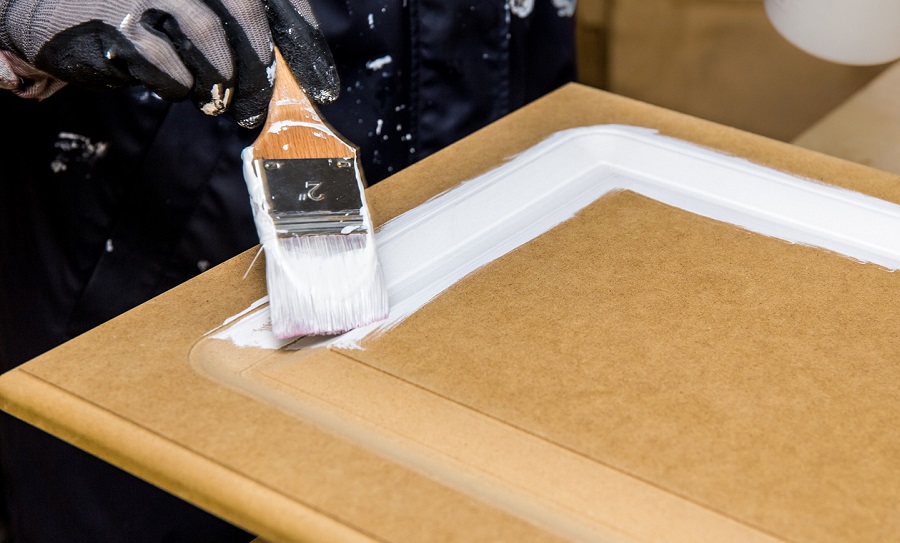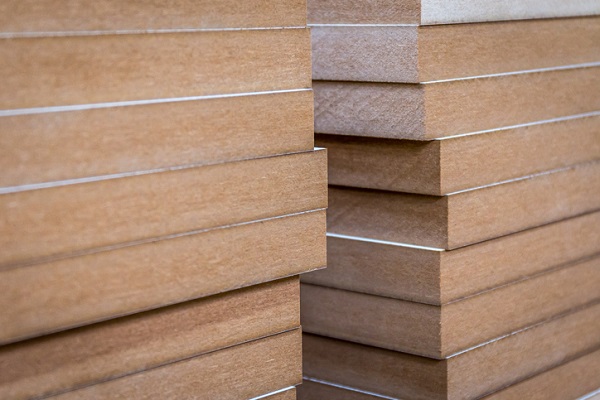What is MDF? Everything You Need to Know
Reading time: 6 minutes
What does MDF stand for?
MDF stands for Medium Density Fibreboard. It is an engineered wood product made from wood fibres bonded with resin under high heat and pressure. The result is a dense, stable, and versatile material. MDF boards are used in a variety of applications, from furniture making to decorative mouldings.
How is MDF made?
The manufacturing process begins with breaking down residuals from hardwood or softwood into fine wood fibres. These fibres are then dried before being mixed with resin and wax binders. This mixture is formed into panels through a process that involves high temperatures and pressure. This manufacturing method gives MDF its uniform density and strength, making it an ideal material for various construction applications.
Key properties of MDF
MDF is known for its physical and mechanical properties. It's dense, sturdy, and smooth, making it ideal for various applications. Let's break down some of these key properties:
Durability and strength
One of the notable properties of MDF is its durability and strength. It's a preferred choice for furniture and cabinetry because it can withstand everyday wear and tear. However, it's worth noting that MDF is susceptible to moisture, so it must be properly sealed if used in damp environments.
Workability
One of the standout features of MDF is its workability. It can be easily cut, drilled, and shaped, making it a favourite among carpenters and builders. Its smooth surface is perfect for painting and veneering, allowing for a high-quality finish.
Compared to plywood and chipboard, MDF offers superior smoothness and uniform density. While plywood is stronger in terms of resistance to warping and splitting, MDF's surface quality and ease of machining make it more suitable for detailed and decorative work. Chipboard, on the other hand, is less dense and less strong, making MDF a more durable and reliable choice for a number of applications.
What are the benefits of MDF?
MDF offers a range of benefits that make it a popular choice in various industries, particularly in furniture making, cabinetry, and interior decoration.
-
Smooth surface: MDF has a uniform and smooth surface, making it ideal for painting, laminating, or veneering. This ensures a high-quality finish that is free from knots and grain patterns, unlike natural wood.
-
Affordability: MDF is more cost-effective than solid wood or plywood, making it an economical choice for both large-scale projects and budget restraints.
-
Versatility: MDF can be used in numerous applications, from intricate mouldings and trim work to furniture and cabinetry. Its workability allows for detailed and custom designs, and is easy to drill, cut and shape.
-
Insect resistant: Due to the chemicals used in the manufacturing process of MDF, they act as a repellent to insects.
The downsides of MDF
While the properties of MDF offer many benefits, it’s not without its drawbacks. Here are some potential downsides:
-
Susceptibility to moisture damage: MDF can swell and deteriorate when exposed to water, requiring proper sealing and painting to protect it from moisture.
-
Release of formaldehyde: Cutting or sanding MDF can release urea-formaldehyde, a harmful chemical, necessitating the use of protective equipment and proper ventilation.
-
Weight: MDF is denser and heavier than some other wood products, which can make it more challenging to handle and install.
-
Reduced strength: Compared to solid wood, MDF has lower structural strength, making it less suitable for certain load-bearing applications.
Ensuring proper sealing, especially in moisture-prone areas, and taking precautions to manage formaldehyde exposure can significantly reduce these issues.
What is MDF used for?
MDF is a versatile material used in a variety of applications due to its smooth surface, uniform density, and ease of machining. It is commonly used in furniture making, cabinetry, moulding, and interior decoration.
Furniture making
MDF is a popular choice in furniture production due to its smooth surface, ease of painting, and affordability. It's often used to create modern, sleek designs that require precise shapes and details, making it one of the most versatile sheet materials available.
Cabinetry and shelving
MDF is used in cabinetry and shelving for its ease of use and smooth finish. It provides a cost-effective solution without compromising on quality, making it ideal for both residential and commercial projects.
Moulding and trim work
MDF is ideal for moulding and trim work due to its smooth finish and ease of cutting. Its fine texture allows for precise, clean cuts, making it perfect for detailed trim and moulding designs. MDF is also a favourite for architrave, wall panelling, window sills, and other decorative mouldings. Additionally, MDF's surface takes paint well, ensuring a sleek finish.
Interior decoration
MDF is frequently used in interior decoration for elements such as wall panels and decorative accents. Its smooth surface can be easily painted or veneered, allowing for a wide range of finishes and styles to match any interior decor.

What is MDF?: FAQs
Is MDF better than wood?
MDF is not necessarily better than wood; it depends on the application. MDF is more uniform, easier to paint, and less expensive, making it suitable for certain furniture and interior projects. However, solid wood is stronger, more durable, and has a natural aesthetic that MDF cannot match.
In detail, MDF is ideal for applications with a smooth, paintable surface, such as cabinets, furniture, and decorative trims such as skirting boards and architraves. It’s also less likely to warp or crack compared to solid wood. However, for structural applications or projects that need the natural beauty and strength of real wood, solid wood is preferable.
Is MDF a plastic or wood?
MDF is a wood product, made from wood fibres combined with resin and wax binders. It is created by breaking down hardwood or softwood residuals into fine particles, then pressed into panels under high temperature and pressure. MDF retains many properties of wood, such as its ability to be machined and painted.
Elaborating further, while MDF is not plastic, it contains resin, a type of adhesive that helps bind the wood fibres together. This composition gives MDF its characteristic smooth surface and uniform density.
Is MDF better than plywood?
MDF and plywood each have their advantages. MDF is smoother and better for painting and complex designs, while plywood is stronger, lighter, and better suited for structural applications. The choice depends on the specific needs of the project, such as appearance, strength, and ease of working.
To expand, MDF is often used for interior projects where a smooth finish is desired, such as in cabinetry and furniture. Plywood, on the other hand, is used for applications that require durability and strength, like flooring, walls, and roofing. Plywood’s layered construction gives it better resistance to moisture and warping compared to MDF.
Disclaimer: The information contained on this page is intended as an overall introduction and is not intended as specific advice from a qualified professional. Travis Perkins aims to avoid, but accepts no liability, in the case that any information stated is out of date.






